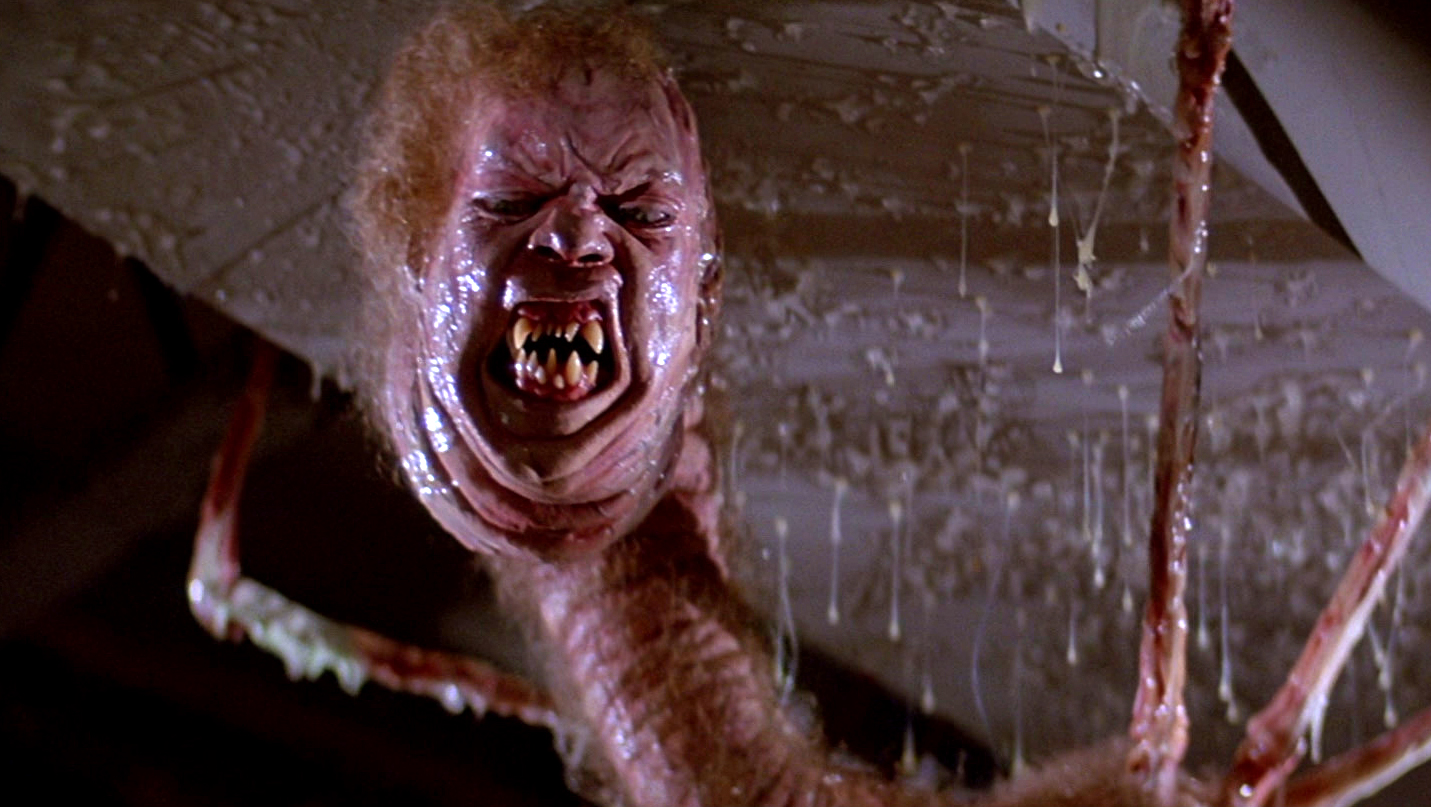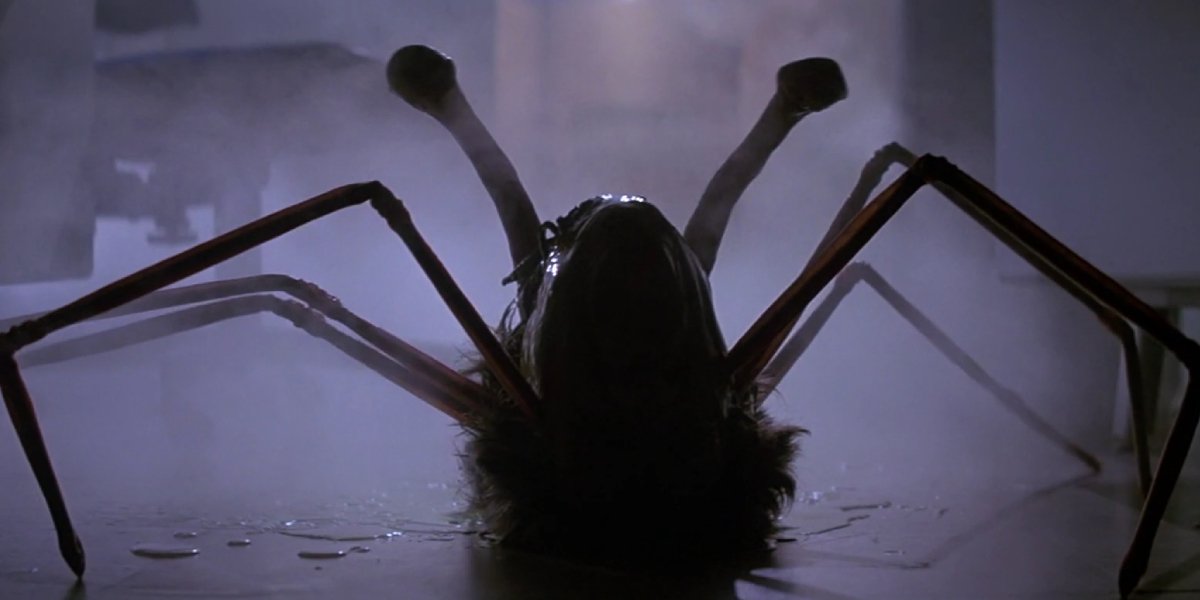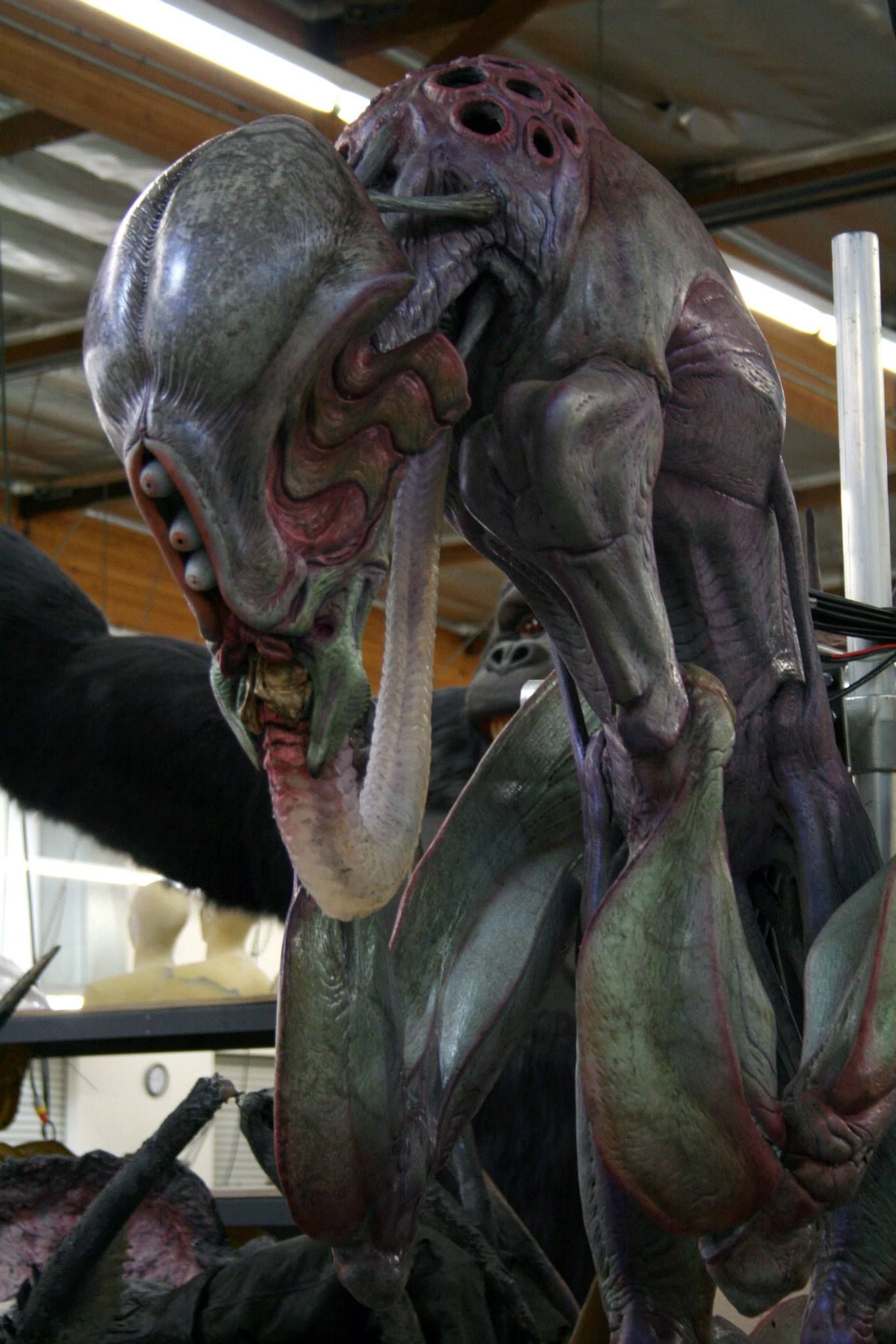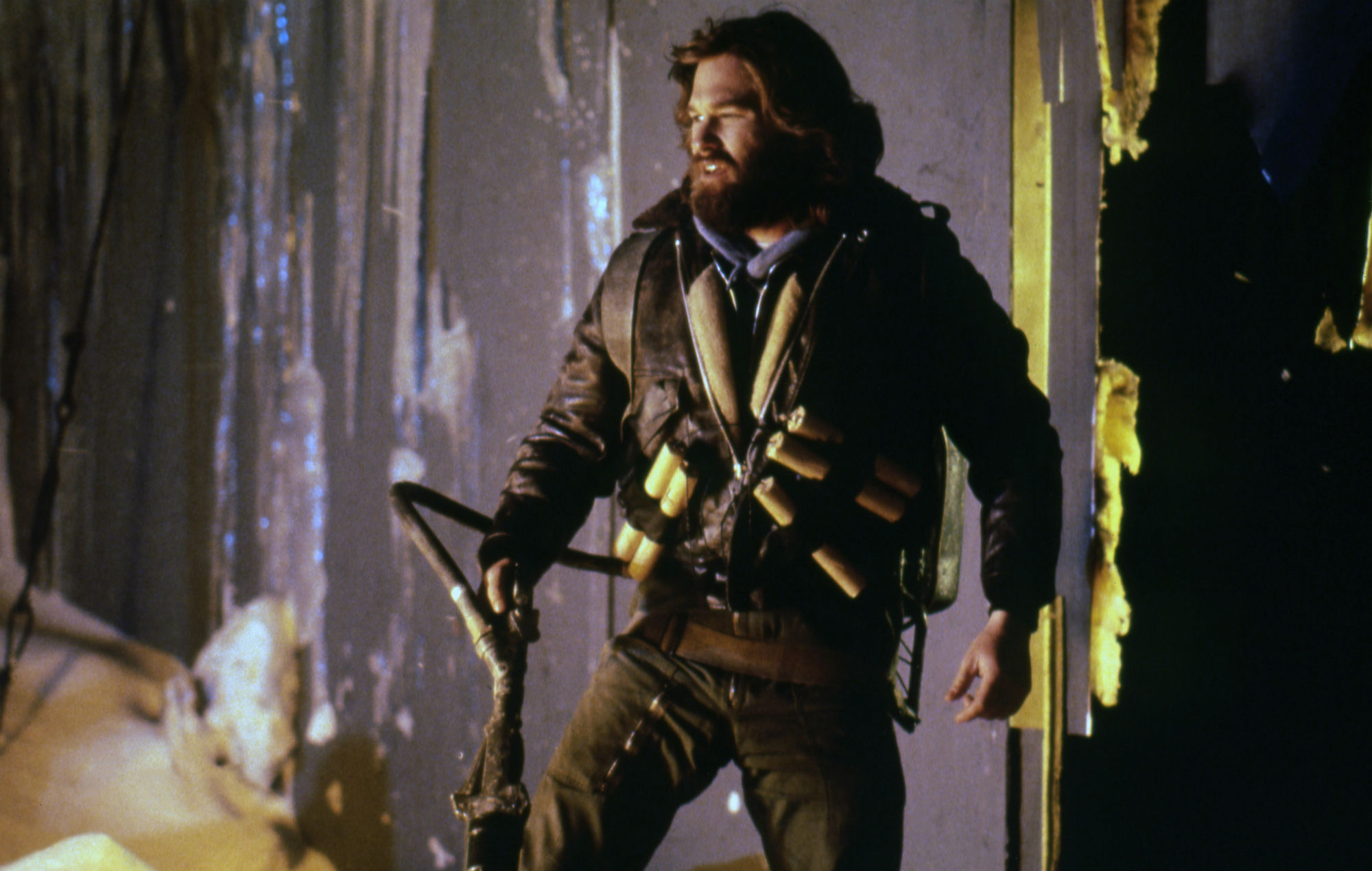Discarding a film just because it contradicts popular beliefs and ideas about filmmaking or because it deviates from popular trends is a harsh act. But every now and then, a film emerges that defies these meaningless constraints to become a masterpiece in its own right. One such film is John Carpenter’s The Thing.
The picture was released in 1982, at a period when man-in-suit aliens like Xenomorphs and jolly aliens like E.T. were all the rage. Under these circumstances, John Carpenter threw his one-of-a-kind extraterrestrial that not only killed humans but also instilled distrust, suspicion, and dread in the audience.
Was the world ready for such a beast yet? No.Critics and fans still wanted an alien that they were accustomed to. TheThing was released just two weeks after Steven Spielberg’s iconic flick, with critics giving it a reaction that was as cold as the film’s setting.
They failed to comprehend the entire use of paranoia and distrust, when in fact, these were the prime themes and the most significant contributors that would make it a classic in the coming times.
1982 was unquestionably not the year for John Carpenter and his film; it was much ahead of its time. Only when it was released on home video and then on television did it achieve fame. A full documentary on the creation, alternate and deleted scenes, and commentary by Carpenter and star Kurt Russell were included on the DVD edition released in 1998.
Following this, they released an HD DVD version in 2006 and the Blu-Ray version in 2008. With successive releases, more and more behind-the-scenes content was provided. By now, The Thing was being watched, understood, and appreciated by more dynamic minds.
What Roger Ebert discarded by saying, “the most nauseating thing I’ve ever seen on a movie screen,” other critics hailed and lauded as one of the best films of the sci-fi horror genre.
People were now able to look through the creature and embrace the nihilistic and depressing viewpoint that the film presented. America was in a recession that was highest since the Great Depression, and this was indirectly a theme of the story.
John Carpenter’s picture is based on the novella Who Goes There by John W. Campbell. The Thing From Another World, a black-and-white sci-fi film based on Campbell’s work, was released in 1951, however it was just a loose adaptation.
Carpenter stayed true to the novella’s original plot, focusing on the intriguing concept of the alien’s ability to shapeshift into any living creature in its environment. John read the novella a few times and drew parallels between it and Agatha Christie’s 1939 mystery novel And Then There Were None.
This helped him build suspense right till the finale. We believe that had it not been for the ambiguous ending, the narrative would have lost the charm. In fact, Kurt Russell, who was playing the alcoholic pilot, suggested to John that the conclusion should be as bleak and confusing as the film itself.
Ultimately, two of the most contributing factors behind The Thing’s continued success are its brilliant special effects and the element of a total loss of identity.
Apart from its fantastic setting, the treatment of its monster is what distinguishes this terrifying film. While most alien films like to hide their creatures behind corners and dark alleys, John Carpenter took the risk of revealing his titular foe to the audience within the first few minutes of the picture.
The Thing has the perfect amount of gore and viscera to satiate any gorehound’s hunger. Initially, Special effects artist Dale Kuipers was brought in to bring the creature to life but he got involved in an unfortunate accident.
This forced Carpenter to bring on board Bottin, whom he had already worked with in the 1980 film The Fog. Bottin collaborated with comic book illustrator and storyboard artist Mike Ploog to finalize the creature designs.
What’s most fascinating about the film’s alien is that events happen at bullet speed. For instance, in the chest chomp scene where the doctor loses his hands, the creature takes no time and grows spider legs from a human head. Stan Winston also did some uncredited work when Bottin was hospitalized due to over-exhaustion from work.
With such great minds working on John’s film, the special effects were deemed to be brilliant.
What is the creature in John Carpenter’s The Thing?

It’s probably a good idea to refresh your memory on the 1982 picture and its 2011 prequel. As a result, a group of scientists establishes a base station in Antarctica in the original. They’re shortly visited by a Norwegian helicopter on the hunt for a stray sled dog.
The Americans shoot the chopper down and hold the dog in their cage while the Norwegians open fire. The dog exposes itself to be The Thing, an incredibly hostile entity. When the Americans arrive to the Norwegian camp, they discover that The Thing isn’t of this world. Eventually, everyone is a suspect.
The 2011 prequel, which Matthijs van Heijningen Jr. directed, revolves around how a group of Norwegian and American scientists found the alien and the events that led up to the first film.
Most videos that talk about The Thing tend to give only a small mention to John W. Campbell Jr. and his 1938 novella, WHO GOES THERE? We’ll do justice to this author and focus on the cultural impact that the novella has left. But before that, let’s deep dive into the creature itself.
When Campbell wrote the novella, we don’t think he had the faintest idea that people would study it intricately even after more than three-quarters of a century. Learning about The Thing’s intelligence, biology, processes of replication, and assimilation is as fascinating as the creature itself.
Unlike most creatures, The Thing doesn’t have specific anatomy or physical form:it simply replicates the organism that it devours. This replication takes place on a genetic level and it seems that flowing blood helps in the process.
The Thing is an old monstrositythat has been to thousands of planets and assimilated with millions of species. The genetic information of all these species has remained with it, just like the genetic data of our ancestors is embedded in our DNA.
When it comes under a threat, it falls back to convert into any of those monstrous beings from outer space. It can turn a human’s chest into a gigantic jaw with razor-sharp teeth, just as it can grow spider legs from a person’s skull, as we witnessed in the 1982 film. Its body evolved multiple tentacles in the Dog-Thing.
It knows how to rearrange its physical, cellular, and genetic makeup. The Thing is capable of producing organs such as the nose, eyes, and ears, as well as operating without them. We assume this is an ability it gained by devouring more developed species in the past.
Not surprisingly, the creature’s anatomy makes it highly resilient to extreme cold, but it’s vulnerable to fire because fire damages its body on a cellular level. It’s most vulnerable as well as dangerous when it is threatened or when it’s in the process of assimilation.
At this moment, it bursts open inside out and allows a variety of strange and terrifying entities to be seen. However, the most peculiar and exciting aspect of its biology is that all the parts of its bodyact as individual organisms when under attack and fight for survival.
So, eliminating the monster completely is difficult as a part of it may be thriving in a corner and waiting for an unsuspecting victim.
The Thing is a master shapeshifter, but it must first come into direct physical touch with a host in order to reproduce it. If the creature is left alone with the victim, the creature’s body opens up, revealing many appendages and tentacles that attack and consume the victim.
It then evaluates and duplicates the molecular structure after that. It is thought to begin eating the victim on a microscopic level before taking full physical form. To suggest that The Thing wears its victim’s body like a robe is an oversimplification, but it’s not entirely inaccurate.
But wait, The Thing will replicate only those organisms that are alive or were freshly killed. There could be two reasons for this behavior. First, it might raise eyebrows and suspicions if The Thing duplicated an organism that was known to be dead for long.
Another possibility is that the assimilation is furthered by fresh blood. The blood might work as a carrier for the hostile cells to take over the host cells. For instance, in the 1982 flick, when Norris Thing kills Copper, chopping his hands, Copper shows no signs of morphing. This could be because Copper bled to death before The Thing’s assimilation could trigger and complete.
The Thing, on the other hand, takes over and mimics every element of the host once the assimilation is complete. Everything is emulated, from habits and etiquette to strengths and shortcomings.
This is conceivable because the parasitic alien not only imitates the physical body of the host, but also the brain. This capacity allows it to mimic the appearance and behaviour of its host.
Once assimilated, it takes on the target’s memory and intelligence, allowing it to blend in with the others without being detected and pick when to attack. Another person’s tool is another person’s weapon.
Interestingly, The Thing fails to be selective about which attributes of the host to undertake, so it also gets the weaknesses. For instance, Norris Thing acquires Norris’s weak heart in addition to other traits.
In the circumstance that The Thing gets split into two, both the bodies start acting as separate creatures with independent and exclusive thinking as part of its defense mechanism. Replicated Things try to infect other organisms, but if the target is too powerful for the parasitic alien, it adds biomass to the body and attempts to overpower the victim.
Although there are no definitive ways to find out just by looking if The Thing has infected a person, many argue that those who are uninfected have a subtle illumination in their eyes.
However, there are other ways to find out about the replicated. Like many infections, the good old blood test comes to the rescue but this blood test doesn’t involve much science. You just take a hot needle and touch it with sample blood.
And, because The Thing’s blood acts like an organism, the blood kicks in its own defense mechanism and becomes hostile. In the 2011 prequel, Kate concludes that the Thing can only replicate living organisms and not non-living materials like metal.
So, she checks for tooth fillings in the mouths of the crew members. If there are no metal fillings, that person might have been copied.
What is the objective of absorption and reproduction, one could wonder? The Thing, on the other hand, has a single goal: to replicate as many organisms as possible while lowering the number of opponents. It would eventually seize control of the entire world.
MacReady was right, and it is not The Thing’s intrinsic nature to get violent at every instance. It’s a highly intelligent and perceptive organism that waits for its victim. It hunts but does so with extensive planning, and the execution is mostly successful. So, it seems that The Thing’s ultimate goal is world domination, making it nothing more than a parasite.
But, Peter Watts wrote a short story named The Things, where he narrated the original story from the alien’s perspective. There It was an explorer, an ambassador, a missionary, and a soldier, according to The Things.
The Thing exaggerates its own importance, claiming that its objective was to mould the unfit into a fit person and that it has limitless knowledge and wisdom gleaned from the farthest reaches of the cosmos. Watts’ work, on the other hand, can be deemed non-canonical.
But we perceive The Thing the way Campbell intended us to. This brings us back to the fact that the creature is an extremely intelligent being- proof of its intellect lies in the 1982 film when we are told that Blair Thing was inventing a makeshift spaceship by using the parts of a defunct chopper.
Blair was a biologist for the American crew, and he couldn’t possibly have the prerequisite knowledge to construct a spacecraft. It is obvious that the Blair Thing was using the knowledge of the original alien, which was gained by it assimilating with other more knowledgeable organisms.
Having said that, The Thing’s intelligence is directly proportional to its size. Its smaller forms tend to either attack as an instinct because they lack an advanced brain or nervous system.
For instance, a sample of blood tries to attack because of its lack of intelligence, the spider-head’s instinct is to hide, but a fully developed Human Thing or Dog Thing blends with others and hides.
The Blair Thing knew that it was under immense mortal threat, and as a result, it was trying to escape and fight another day when the situation was more favorable. In the 2011 prequel, the Juliette Thing showed higher intelligence and attempted to utilize an extinguishing gas to save itself from burning.
Timeline Of The Creature Presence On Earth

A deleted scene from the prequel had a detailed story about the arrival of The Thing on Earth, and Amalgamated Dynamics created the pre-production artwork and a fullyfunctional animatronic. Aliens in a spaceship undertook interplanetary zoological missions thousands of years ago.
They went to different planets and collected the species that lived there in containment pods. The Thing was one of these species, and it amalgamated with one of the aliens from the vessel, continuing until only the pilot remained.
In an attempt to exterminate The Thing, the extraterrestrial pilot wrecked his ship on Earth. The parasitic species, on the other hand, froze in Antarctica’s frigid climate.
A hundred thousand years after the crash, a Norwegian crew at Thule Station discovers the spaceship and the frozen creature that was trapped inside it. They brought the frozen alien back to base and Dr. Sander Halvorson desired to take a tissue sample from the being.
Joyous by this monumental discovery, most of the crew indulges in celebration, but to everyone’s surprise, the helicopter co-pilot Derek notices that the alien has broken free. The crew then divides into groups to cover more ground to search for it. The first casualty of this chaos was Henrik; he was pulled by The Thing and had started the assimilation when it was burned down.
However, they later find a dead dog in the kennel. Meanwhile, Derek, pilot Sam Carter, Griggs, and Olav decide to take the helicopter and bring back help, but the missionimmediately fails when Griggs transforms and creates a bloody mess on the chopper, crashing it into the mountains.
By the end, a Norwegian pilot arrives at the site to find the facility destroyed and the remains of the Two-Faced Thing. At that moment, Lars’Alaskan Malamute bolts out of the debris and runs. Lars and the pilot chase the dog in a helicopter.
A Norwegian chopper fires upon US Outpost 31 in the first scene of the 1982 film. As the pilot fires at the dog, the helicopter’s occupant, presumably Lars, blows up the aircraft and himself. The station commander shoots down the pilot in self-defense, and the dog easily gets into the outpost.
American helicopter pilot R.J. MacReady and Dr. Copper leave to investigate the Norwegian base and find the charred remains of a humanoid organism which they bring back for their biologist Blair to perform an autopsy.
The organism possesses human organs, according to Blair. Lars’ sled dog, meantime, is housed in a kennel with other dogs, and it is here that we see the gloriously slimy Dog Thing. The crew is alerted by the turmoil at the kennel, and Childs burns the Dog Thing.
Panic grips US Outpost 31, as the events at the Norwegian base threaten to repeat themselves. The picture becomes grimmer, darker, and more claustrophobic as it proceeds, culminating in a gloomy conclusion that has left some scratching their heads to this day.
The 2002 video game deals with the aftermath of the events of U.S. Outpost 31. The U.S. Army sent two helicopters to inspect the situation. The Alpha team was ordered to visit the Norwegian base while the Bravo Team went to U.S. Outpost 31. Blake, North, Burrows, and Weldon of the Bravo team inspected the site and came across MacReady’s audiotape.
They also discovered Blair Thing’s half-built homemade spaceship in the works. In the hopes of murdering any aliens who may have survived, the Bravo Team rigs the base with C-4 charges and blows up the previously destroyed camp.
When Blake loses touch with the Alpha Team, he insists on being dropped off at the Norwegian site because he is the only one who speaks Norwegian. Blake was introduced to Carter, Cruz, and a paranoid Pierce, who demanded that everyone take a blood test.
All of them, with the exception of Blake and Pierce, turned out to be doppelgängers. They come under heavy attack from numerous alien Things. Blake kills whatever The Thing monsters he could find, and Pierce commits suicide.
However, the game adds another element to the story, the greed of humans for power. Blake rescues a researcher named Faraday, who was working for Gen Inc under the command of Whitley. Whitley intended to weaponize The Thing and its powers as a virus named Cloud Virus; he also subdued and sedated Blake and took him to the research facility.
Blake’s DNA made him immune to The Thing’s infection, according to Faraday. Whitley shot Faraday dead and tried to flee the facility with the weaponized Cloud Virus after a debate about using Blake as a test subject for the Cloud Virus.
When Blake approached Whitley, he discovered that he had injected himself with the virus and was attempting to depart Antarctica in order to infect the entire planet. Blake soon noticed a helicopter landing on the helipad and requested assistance from the pilot. The pilot agreed, and the Whitley Thing was killed by both of them. When Blake inquired about the pilot’s name, he replied that his name was R. J. MacReady.
What Is The Real Form Of The Creature?

The origins of The Thing are a mystery, but two popular explanations appear to be more likely than the rest. First, you’ll come across a hazy description of the Thing while reading Campbell’s novella. It has crawling worms on its head, similar to Medusa’s snakes, according to Campbell.
Three glowing crimson eyes, the colour of which resembled new blood, were also present on the creature. In 1981, the venerable horror magazine Fangoria conducted a drawing contest in which participants were challenged to depict the Thing.
Surprisingly, the winning Fangoria contest submission was shared to Instagram in 2018. However, these hypotheses could be wrong because we know that The Thing is a master shapeshifter and it could have assumed these grotesque figures by imitating some other alien.
So, finding the true form of The Thing is like figuring out which came first, the egg or the chicken. Although the chicken and egg problem has been solved by science, we can not take the help of science to discover a true form of a fictional alien.
This leads us to the second plausible theory. It’s as simple as that The Thing has no true form or anatomy. It’s just a living creature that assembles with others. John Carpenter himself mildly substantiated this hypothesis and he agreed that real thought was given to the original form of the alien because no one knew for sure what it truly was.
However, screenwriterEric Heisserer and director Matthijs Van Heijningen of the 2011 prequel did consider things. The 2011 prequel was to feature a similar three-eyed monster but it was ultimately scrapped from the picture.
Overall, Marvelous Videos believes that the greatest way to describe The Thing is through the acts and decisions it undertakes in order to further its plan of escape, survival, and gradual takeover of an entire planet.
The debate about its true physical shape would become interminable, like a circle. As a result, it’s critical to characterise the creature using a fresh perspective and unique criteria, such as identifying it based on its actions and instincts rather than its form and anatomy.
Future Of The Franchise?

Blumhouse Productions and John Carpenter himself have discussed a relaunch. The relaunch will take place in a more modern context and will expand on Dark Horse Comics’ The Thing From Another World.
These are about MacReady’s story after he managed to escape Antarctica’s freezing temperatures. It’s been suggested that the film will take cues from the novella’s enlarged edition.
Campbell, interestingly, sent a box of writings to Harvard University before his death. In 2018, author and biographer Alec Nevala-Lee discovered an unpublished manuscript with the title Frozen Hell. This is, in fact, an extended version of the original novella and can well be called a novel.
Nevertheless, the question remains whether we genuinely need a remake of the film.
The 2011 release was marketed as a prequel but it looked more like a remake. It didn’t try to expand on the original film and always worked in its shadow. Yes, we do get a hint about the origin of The Thing, but apart from that, we got the same old recipe of claustrophobia, paranoia, and fear.
A new film set in the world of John Carpenter’s The Thing is always welcome, especially when Carpenter himself is expected to be involved in the production. However, we can’t help but be concerned about the worst-case scenario.
We’ve all seen how poorly remakes of iconic films like Psycho, Total Recall, and Conan fared. We genuinely hope that John Carpenter’s The Thing does not suffer the same fate.
We’d appreciate it if you could tell us how you feel about this new project and what you hope to get out of it in the comments. Hopefully, someone from the production staff will take a cue from our insignificant YouTube channel.
